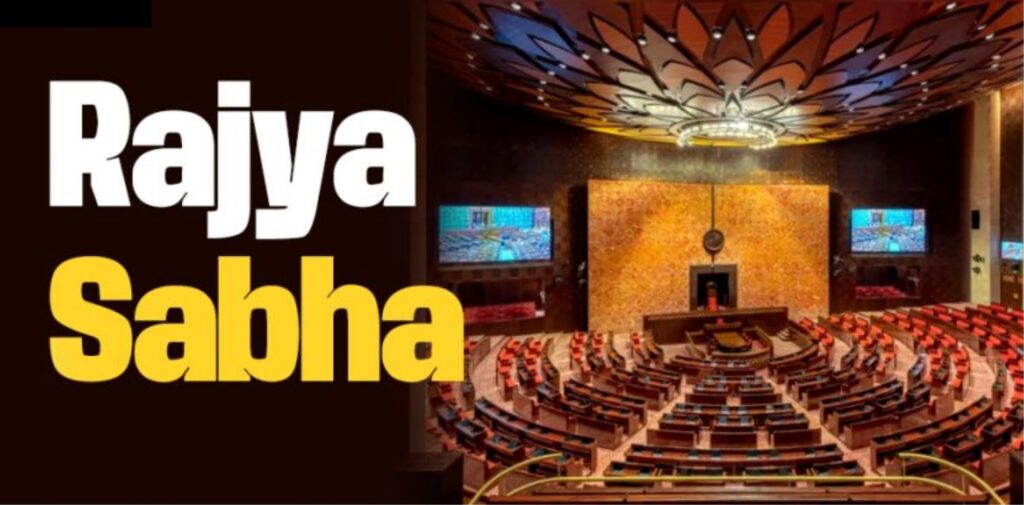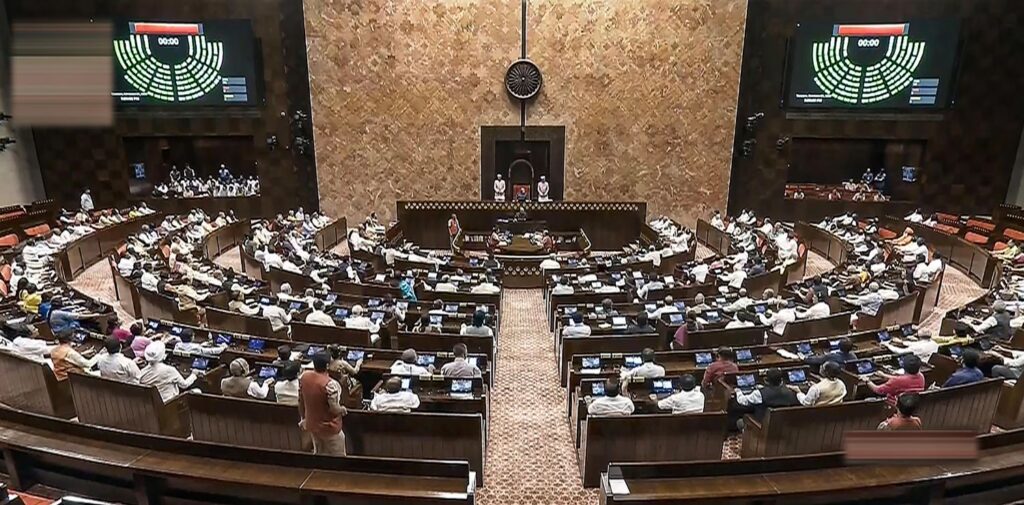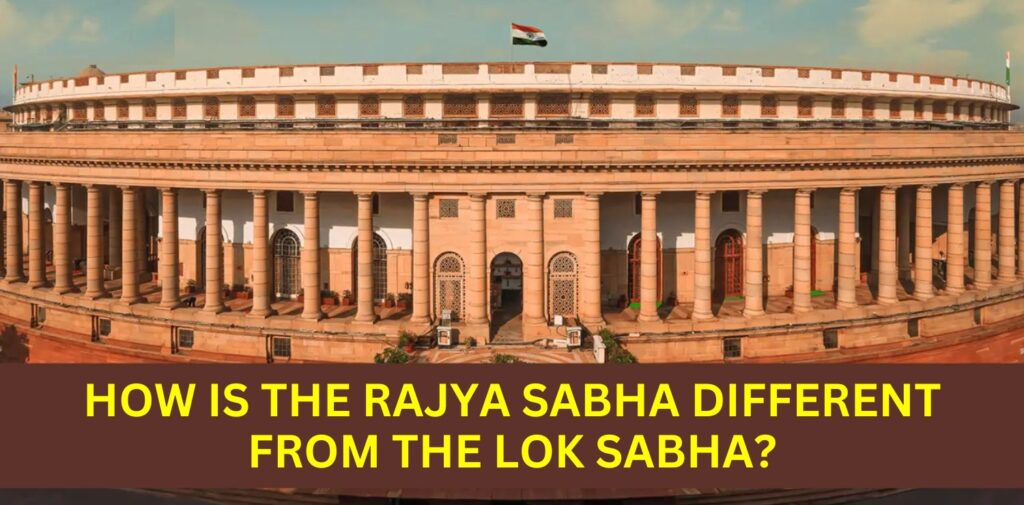India’s Parliament is the supreme legislative body that plays a vital role in making and shaping the laws of the country. It is made up of two houses: the Lok Sabha (the House of the People) and the Rajya Sabha (the Council of States). While both houses work together to ensure that laws are debated, discussed, and passed, they have different roles and functions within the political system.
In this article, we will dive into Role of the Rajya Sabha — its role, its importance, and how it differs from the Lok Sabha, in an easy and simple language.
What is the Rajya Sabha?
The Rajya Sabha is the upper house of the Indian Parliament. It is made up of members who are elected indirectly, meaning they are chosen by the elected members of the State Legislative Assemblies, and by members of the Legislative Assemblies of Delhi and Jammu & Kashmir (if applicable). There are also some members who are nominated by the President of India for their expertise in various fields like literature, science, arts, and social service.

The Rajya Sabha has a total of 245 seats, of which 233 are filled through elections, while 12 members are nominated by the President. Unlike the Lok Sabha, which is directly elected by the people of India, the Rajya Sabha provides representation to the States and Union Territories, ensuring that regional voices are heard in the country’s decision-making process.

The Role of the Rajya Sabha
The Rajya Sabha’s main role is to represent the interests of the States and Union Territories in the Indian Parliament. Since it is made up of representatives chosen by State Legislative Assemblies, it acts as a check and balance to the decisions made by the more populous Lok Sabha. It also brings a wider perspective to the issues that affect the country, as members come from different states with different needs and priorities.
Here’s a breakdown of the key roles and functions of the Rajya Sabha:
- Legislative Role: The Rajya Sabha plays an important role in making and passing laws. While the Lok Sabha is the more powerful house when it comes to financial matters (like the Budget), the Rajya Sabha also participates in the process of law-making. A bill can be introduced in either house, and both houses must agree on it before it can become a law. The Rajya Sabha reviews and debates the bills that come from the Lok Sabha, suggesting amendments or changes. If both houses agree on the bill, it is sent to the President for approval.
- Review and Revision of Legislation: The Rajya Sabha is sometimes called the “revising house” because it often reviews and revises bills passed by the Lok Sabha. Bills are usually sent to the Rajya Sabha after being discussed and passed in the Lok Sabha. The Rajya Sabha can either approve the bill, reject it, or suggest amendments to it. If there are any disagreements, the bill is sent back to the Lok Sabha for further discussion.
- Representation of States: The Rajya Sabha is specifically designed to represent the interests of India’s states and union territories. Each state is given a certain number of seats based on its population. This ensures that smaller states have a voice in the central government, preventing larger states from dominating the decision-making process. This makes the Rajya Sabha a platform where regional concerns are raised and addressed.
- Checks on Executive Power: The Rajya Sabha helps to check and balance the power of the executive (the Prime Minister and the Cabinet). It questions and holds the executive accountable through debates and discussions. For example, members of the Rajya Sabha can raise questions about the actions and policies of the government. The house also debates issues related to governance, economic policies, and social matters, ensuring the government does not act unchecked.
- Debates and Discussions: The Rajya Sabha provides a space for extensive debates on important national issues. While they usually deals with matters that require immediate attention, the Rajya Sabha often serves as a forum for in-depth discussions. Many policies, bills, and issues are discussed in the Rajya Sabha before any final decisions are made.
- Electoral Role: The Rajya Sabha plays a key role in electing the President and Vice President of India. In this respect, members of both Sabha participate in the election process. This gives the Rajya Sabha an indirect influence on the highest offices in the country.
- Special Powers and Functions: The Rajya Sabha has certain special powers, especially in matters of legislation. For example, it can introduce non-financial bills and amend them. It also plays a vital role in matters of impeachment of the President and removal of judges of the Supreme Court or High Courts.

How Is the Rajya Sabha Different from the Lok Sabha?
While both houses of Parliament have their own roles, there are several important differences between the Rajya Sabha and the Lok Sabha.
- Membership and Election Process:
- The Lok Sabha consists of 545 members, directly elected by the people of India through general elections, which take place every five years.
- The Rajya Sabha, on the other hand, has 245 members, of which 233 are elected by the members of State Legislative Assemblies and Union Territories, and 12 are nominated by the President for their knowledge and expertise in areas like science, art, and social service.
- Power and Authority:
- The Lok Sabha is considered the more powerful house, especially when it comes to financial matters like the Union Budget and taxes. Bills related to money can only be introduced in the Lok Sabha, and the Rajya Sabha can only suggest changes to these bills.
- The Rajya Sabha is more of a revising and reviewing body. It is less powerful when it comes to financial issues, but it can delay and amend non-financial bills passed by the Lok Sabha. It can also create space for important debates on national issues.
- Term of Office:
- The Lok Sabha has a fixed term of five years. After that, general elections are held to re-elect members.
- The Rajya Sabha is a permanent body, which means that it is not dissolved. One-third of its members retire every two years, and new members are elected to fill their places.
- Role in Lawmaking:
- Both houses play a role in lawmaking, but the Lok Sabha is usually more influential in the final decision. If the Rajya Sabha disagrees with a bill passed by the Lok Sabha, the latter has the power to pass it again, and the bill becomes law even without the Rajya Sabha’s approval.
Conclusion
In conclusion, the Rajya Sabha plays a critical role in ensuring that India’s legislative process is inclusive, balanced, and representative of the country’s diverse states and regions. While it may not have the same powers as the Lok Sabha, it is still a vital part of the democratic system, helping to review, amend, and suggest improvements to laws. Its role as a revising and debating body makes it a key player in shaping India’s policies and laws.
Together with the Lok Sabha, the Rajya Sabha helps maintain a system of checks and balances, ensuring that the government remains accountable and responsive to the needs of all citizens, whether from large cities or smaller towns.




